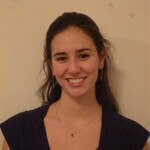
Search Axens.net
Process Technologies
process_technologies
Solutions - Advanced Process Licensing Solutions
Conference
Milan, Italy - CEST
3 days
Enlit Europe Conference
Enlit Europe conference, held from 30 November to 2 December for 2021, is the biggest and first end-to-end conference and exhibition for energy professionals. This conference will bring all of these people together to seize current opportunities, spotlight future ones, and inspire the next generation to participate in the journey
Conference
Manama, Bahrain - UTC+3
2 days
Speakers

Jean-Philippe Toupance
Lead Technologist, Conversion & Clean Fuels

Cécile PLAIN
Consulting & Digital - Technology Group Manager
BBTC MENA 2021


Under the Patronage of H.E. Shaikh Mohammed bin Khalifa Al Khalifa, Minister of Oil, and with the support of the National Oil & Gas Authority (NOGA) and Bapco as Principal Sponsor, BBTC MENA 2021 will bring again together the industry from 14 - 15 December 2021 to discuss the latest developments and the future for bottom of the barrel conversion and catalyst management.
Oil Refining
Renewable Fuels & Bio-Based Chemicals
Diesel Hydrotreating
FCC Naphtha Hydrotreating
Residue Hydroconversion & Hydroprocessing
Fixed Bed hydrotreating
Ebullated Bed Hydrocracking
Digital Services & Applications
Process Technologies
Technical Support & Performance Management
Middle-East
+10
Conference
India - UTC+5:30
2 days
Speakers

Nicolas Menet
Plastic Recycling Business Development Manager

Anais Dorsey
Aromatics Technologist
Virtual INDIAN Petrochem
INDIAN Petrochem will be held online, on 17th & 18th November 2021. The Indian Petrochem conference has emerged as the annual focal point for a gathering of the global and Indian petrochemical fraternity, and an important event in the petrochemical industry calendar. The Indian Petrochem conference offers focused coverage of the Indian and global petrochemical markets.
What’s the range of drop-in fuels we could potentially produce from biofeedstocks (lipids) with an appropriate process line-up?
Lipids are biofeedstocks that, after hydrotreatment, will generate 100% linear paraffin streams in the typical range of C14-C20, free of sulphur and nitrogen.
We want to reduce the refinery’s carbon footprint, starting with SMR. What’s the best economic approach: CCUS, an alternative process, or buy in the hydrogen?
Starting with SMR in the refinery, you will have three steps for decarbonisation: Carbon capture on the SMR synthetic gas itself, retrofitting the existing SMR in order to reduce CO2 emissions and Carbon capture on the flue gas.



 Carbon Capture, Utilization & Storage
Carbon Capture, Utilization & Storage